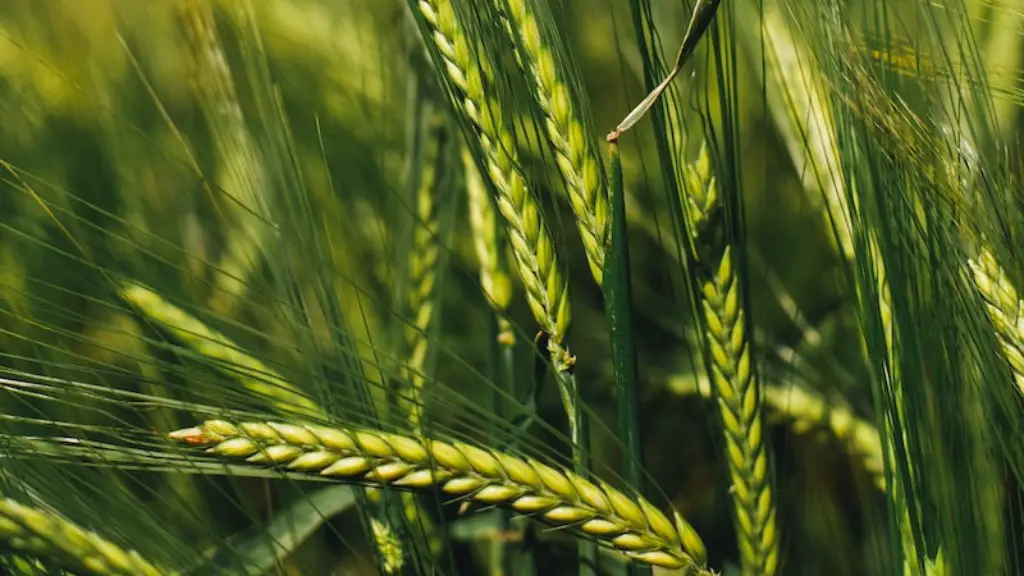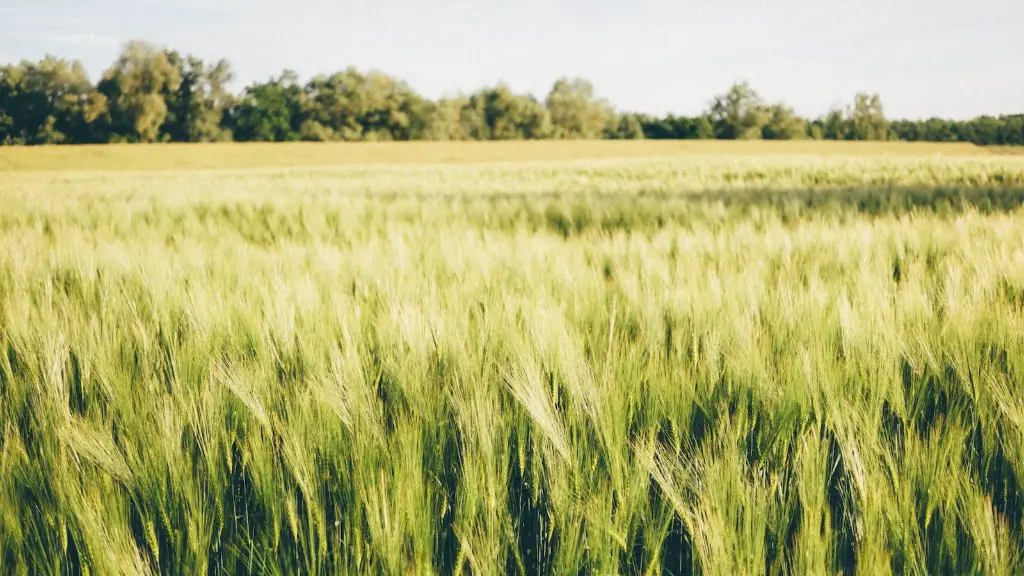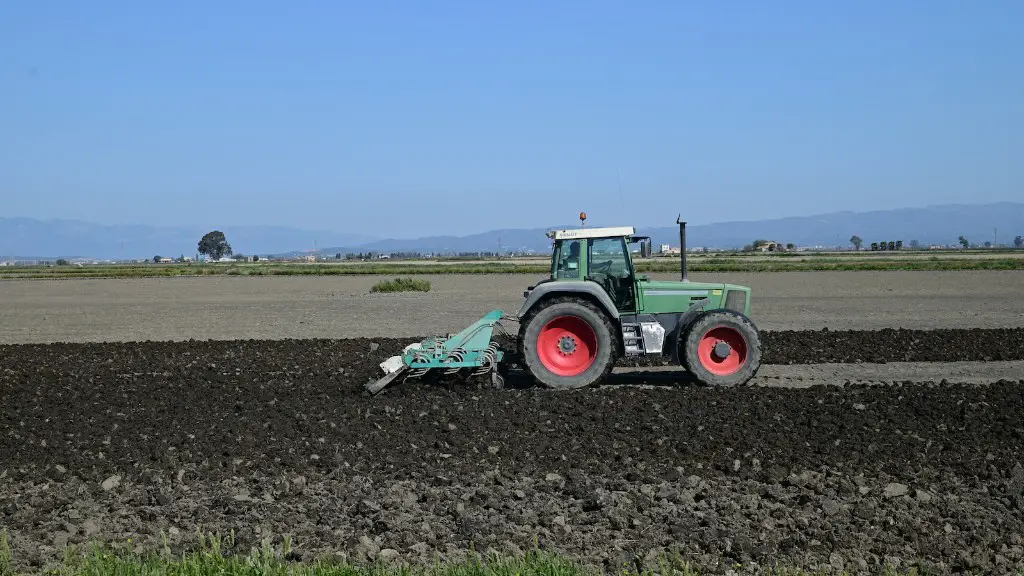The earliest evidence of agricultural practices in Mesopotamia dates back to the 9th millennium BCE. The first signs of cultivated plants have been found at Tell Abu Hureyra, a site in Syria. The early farmers of Mesopotamia used simple tools, such as sickles and hoes, to harvest their crops. irrigation systems were also developed in order to water the fields.
The beginnings of agriculture in Mesopotamia are believed to date back to the Pre-Pottery Neolithic period, around 10,000 BC. This was a time when the people of the region began to domesticate plants and animals, and to practice irrigation.
When did agriculture start in Mesopotamia?
The Tigris and Euphrates rivers have been flooding regularly for millennia, making the land around them especially fertile and ideal for growing crops. This made the region a prime target for the Neolithic Revolution, also called the Agricultural Revolution, which began to take place around 12,000 years ago. The Neolithic Revolution was a period of time when humans began to transition from a hunter-gatherer lifestyle to one that was based around agriculture. This transition led to the development of civilizations, and the Tigris-Euphrates region was one of the first places where this occurred. The regular flooding of the Tigris and Euphrates Rivers played a key role in the development of early civilizations, and the Agricultural Revolution that took place in the region was a major turning point in human history.
The first archaeological signs of irrigation in Mesopotamia appear around 6000 BC at Choga Mami in central Mesopotamia, during the Samarra culture (6200-5700 BC). The earliest known irrigation systems were used to water crops in the Fertile Crescent, an area including parts of modern day Iraq, Syria, Lebanon, Israel, Palestine, and Jordan.
When did agriculture begin
The domestication of plants and animals was a major turning point in human history, and the development of agricultural communities was a significant milestone. Agriculture allowed for the growth of civilizations and the development of complex social structures. It also had a profound impact on the environment, as the clearing of land for farming altered local ecosystems. The Agricultural Revolution was a pivotal moment in human history, and its effects are still felt today.
Mesopotamia was home to one of the most plentiful agricultural systems in the ancient world. The main types of grain that were used for agriculture were barley, wheat, millet, and emmer. Rye and oats were not yet known for agricultural use.
Where did agriculture first begin and when?
The Zagros Mountain range, located at the border between Iran and Iraq, is home to some of the world’s earliest farmers. Sometime around 12,000 years ago, our hunter-gatherer ancestors began trying their hand at farming. The Zagros Mountains provide an ideal location for early farmers, with ample rainfall and ample sunlight. The mountain range also contains many different kinds of plants and animals, which would have provided our ancestors with a variety of food sources. Today, the Zagros Mountains are still home to many farmers, and the region is known for its production of wheat, barley, and other crops.
The Fertile Crescent is a region in the Near East that was one of the cradles of civilization. Agriculture is thought to have originated in the Fertile Crescent, and the region was home to some of the earliest known civilizations, such as the Sumerians and the Babylonians. Today, the Fertile Crescent is still an important agricultural region, and it is also home to many important archaeological sites.
Where did agriculture develop 9000 BCE?
The Fertile Crescent developed agriculture first, about 9000 BCE On the other side of the world, China and New Guinea followed in 7000 BCE For thousands of years, the only part of Africa to have agriculture was Egypt, interacting closely with Southwest Asia. Agriculture allowed for the domestication of plants and animals, which led to the development of civilizations. Agriculture also allowed for the growth of cities and the rise of empires.
There are a few theories as to why this transition occurred, but the most likely explanation is that it was simply a more efficient way to obtain food. Hunter-gatherers often had to travel long distances to find food, and the food they did find was not always reliable. By cultivating crops and raising animals, people could have a more reliable source of food that was closer to home.
This transition away from hunter-gatherer lifestyles continued over the millennia, and by the end of the 19th century, less than 5% of the world’s population was still living as Hunter-gatherers.
What was the earliest form of agriculture
As one of the earliest forms of agriculture, barley provided an important source of food for early humans. Along with wheat, barley was soon domesticated in the Near East. Soon after, peas, lentils, and vetch were also domesticated. This period also saw the domestication of dogs, goats, and sheep.
It is thought that the switch from hunting and foraging to settled farming occurred due to a number of factors. The last ice age likely played a role in the shift, as it created new opportunities for plant life to thrive. Additionally, the development of polished stone tools made it possible for people to more easily cultivate crops. finally, as populations began to grow, it simply became necessary for people to find new ways to produce food.
When was the 1st Agricultural Revolution?
The Neolithic Revolution was a period of time during which humans began to farming and domestication of plants and animals. This period of time is thought to have began about 12,000 years ago and coincided with the end of the last ice age. This Revolution allowed for humans to settle in one place and develop civilizations. Through the domestication of plants and animals, humans were able to create food surpluses which allowed for the development of cities and complex social structures. The Neolithic Revolution was a pivotal time in human history and led to the development of modern civilization as we know it.
The Sumerians are considered the inventors of agriculture for their large-scale, intensive cultivation of land, mono-cropping, and organized irrigation. This allowed for a specialized labor force that allowed for the development of other technologies and advances.
How did Mesopotamia grow and develop due to agriculture
The land in Mesopotamia is incredibly fertile, which has allowed the people of the region to produce an abundance of crops. Over time, they have been able to produce enough food to feed themselves and trade the surplus. This has helped Mesopotamia grow in size and power, as the trade of its rich agricultural resources has increased.
Mesopotamia is a region located in the eastern Mediterranean. It is known for its fertile soil and ample rainfall, which made it ideal for agriculture. The Mesopotamians were some of the earliest people to engage in agriculture, and it is thought that the agricultural production was the basis for supporting and provisioning Mesopotamian cities, states and empires. The Mesopotamians developed irrigation systems and irrigation canals to bring water to the fields, and they also developed new techniques for improving crop yields. The agricultural production allowed the Mesopotamians to create a surplus, which was used to support the cities and states.
How was agriculture in the Middle Ages?
The medieval farming system was called an open-field system. Each village divided several hundred acres into narrow strips cultivated by peasant serfs. The serfs worked the land for their lord and paid him a portion of their harvest.
The first agricultural revolution was a pivotal moment in human history. It allowed for the development of permanent settlements and the growth of civilizations. The earliest known developments of this revolution occurred in the Middle East around 10,000 BC. This was a time of great change and progress for humanity.
Did agriculture start 8000 years ago
Agriculture allowed for the domestication of plants and animals, which led to the development of civilizations. Agriculture allowed for the growth of cities and the rise of civilizations. Agriculture is the foundation of modern society.
The Neolithic founder crops were cultivated in the Levant around 9500 BC. These crops included emmer wheat, einkorn wheat, hulled barley, peas, lentils, bitter vetch, chickpeas, and flax. Rye may have been cultivated earlier, but this claim remains controversial.
Final Words
The history of agriculture in Mesopotamia extends back to the early Neolithic period, when people first began to practice farming in the region. There is evidence that early Mesopotamian Farmers used irrigation to water their crops, and that they cultivated a variety of plants, including wheat, barley, peas, and lentils. The first permanent settlements in Mesopotamia were built around 4000 BCE, and by this time, agriculture was an important part of the Mesopotamian economy.
The agricultural revolution in Mesopotamia began around 9000 BC, when the first settlers began to domesticate plants and animals.Over the next few millennia, the Mesopotamians perfected their methods of irrigation and crop cultivation, and became one of the most prosperous cultures in the ancient world. Today, Mesopotamia is still an important agricultural region, and its ancient methods of irrigation and crop cultivation are still in use.





